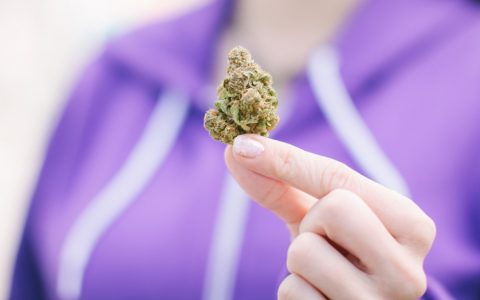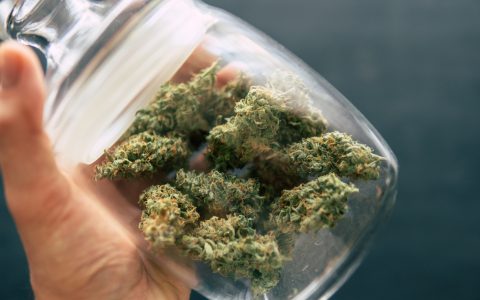Men and women’s brains are different. This is not unique to humans, but instead is pervasive throughout the animal kingdom. Sex differences can be found at all levels, from the brain cell through behavior of the entire organism, and these differences impact how the different sexes respond to everything from stress to drugs—including cannabis.
For decades, pre-clinical cannabis research generally used exclusively male rodents (this has traditionally been a problem across all areas of research). This strategy was supposed to reduce the variability in behavior imposed by fluctuating hormones across the reproductive cycle.
Instead, it limited our understanding of cannabis’ actions, primarily those of THC, to a male brain. Scientists are now starting to uncover the significant interaction between the endocannabinoid system and the sex hormone, estrogen, in mediating cannabis’ effects. This interaction then influences everything from brain development to risk for developing a cannabis use disorder.
The Effects of Cannabis Feel Stronger to Women
In general, women are more strongly affected by cannabis than men. With one exception, according to rat studies: Women tend to be less afflicted by the munchies.
But for most other behaviors, females are more sensitive. And sometimes it’s for the better. For instance, cannabinoids may contribute to better pain relief in women than men. Cannabinoids also elevate sexual behavior in female rodents while it’s suppressed in males. But in other cases, it can have stronger negative consequences in the form of increased anxiety or depression from too much THC consumption.
These stronger effects of cannabis in women likely underlie why women progress from first hit to forming a cannabis use disorder quicker than men. Female rats will push a lever more than males to infuse a drug that activates their CB1 receptors, the same brain target as THC. While this may be part of the puzzle, it likely reflects differences in how sex hormones influence the way CB1 receptors are expressed in key brain regions involved in the pleasurable effects of THC.
Estrogen & the Endocannabinoid System
THC’s effects are strongest when estrogen levels are high.
Why does cannabis affect women and men differently? Because women and men have different levels of sex hormones, and these sex hormones interact with the endocannabinoid system to influence the strength of cannabis’ effect.
Estrogen, of particular relevance here, is a sex hormone that interacts with the endocannabinoid system. Women have higher estrogen levels than men, and these levels fluctuate throughout the reproductive cycle.
In many brain regions, the number of CB1 receptors fluctuates with the amount of estrogen in the brain. Estrogen also increases the amount of the endocannabinoid, anandamide, thereby elevating the strength of the endocannabinoid system. Consistent with this, THC’s effects are strongest when estrogen levels are high.
Why Estrogen?
Early in brain development, the sex hormones (testosterone in males and estrogen in females) modify how brain cells connect and communicate with one another to promote “male-like” and “female-like” brains. These sex-specific brain circuits end up influencing our emotions and behavior. In adolescent and adult women, estrogen activates these brain circuits which alters cannabis’ strength.
Estrogen is one reason cannabis can be particularly disruptive to the developing female brain. The endocannabinoid system plays an important role in brain development, and there are drastic shifts in the system’s strength in key brain regions involved in emotional and reward-related processing. For normal brain development to occur, the endocannabinoid system must be tightly regulated.
If CB1 receptors are overly activated because of interactions between THC and estrogen, the system falls out of balance, and negative consequences can result. For instance, adolescent women who use cannabis had larger amygdalas than their cannabis-using male cohort or non-using women. This is an important brain region in the “threat circuit,” and indeed, these women had a more negative mood and heightened anxiety compared to their peers.
Studies looking at the interaction between adolescent cannabis use on brain development are generally referring to high-THC cannabis use. It’s unclear at this time what the consequence of more balanced strains—with a higher CBD content—might be since CBD reduces many of the negative effects of THC on cognitive performance by blocking its action at CB1 receptors.
So the next time you’re trying out a new product or strain, keep in mind that your best measuring stick is someone of the same sex.






